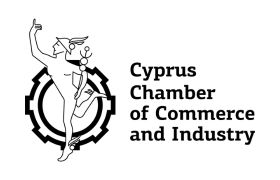“You need to realize that otherwise, a bailout of the banks and the full protection of deposits, would have completely bankrupted Cyprus,” the Dutch politician stated.
He was responding to a question about the deposits haircut posed by Cypriot MEP Costas Mavrides at the European Parliament’s finance committee.
Tracing the background to the bail-in, Dijsselbloem said that Cyprus’ fiscal and banking crisis should have been dealt with long before the general elections in Cyprus in February 2013.
It would have been better had a [rescue] programme been initiated earlier, he added.
“There were two distinct options. Inside the Eurogroup, there was a very strong sense that the bail-in approach was inevitable already when the talks got underway.
“But, in all honesty, it was the Cypriot government that was averse to this approach, and that is why we came to that first decision which was criticized so much, the first plan that provided for a flat contribution by bank account holders, across all the banks and for everyone.
“It was a tax, a contribution aimed to salvage the financial system in Cyprus.”
Going on, Dijsselbloem said the chief criticism of the flat levy proposal – a 6.75% tax on those with savings under €100,000 and a 9.9% tax on deposits over €100,000 – was that insured deposits were being assailed.
In reality, however, the Cypriot state lacked the funds to guarantee insured deposits.
“Therefore the guarantee of deposits in Cyprus at that time was imaginary. And the criticism that we dealt a blow to the deposit guarantee system is likewise imaginary.”
On March 19, 2013 the Cyprus parliament voted against the proposed tax on bank accounts irrespective of amount and called it a “bank robbery.”
This effectively left only one option, the bail-in.
After several meetings, on March 25 the Eurogroup finance ministers and the IMF came up with a new plan. Laiki Bank, which was placed under the resolution authority, absorbed all uninsured deposits and its assets (including non-performing loans) were transferred to Bank of Cyprus. The latter was then forced to bail in its shareholders and had to implement a haircut of uninsured deposits (just under 50%) for its recapitalisation needs.
Asked whether the Cyprus government agreed with this latter solution, Dijsselbloem said: “Of course, otherwise we would not have taken that decision.
“You need to realize that the other approach, a bailout of the banks and full protection of depositors, would have completely bankrupted Cyprus. With the bail-in, we reduced the [rescue] programme for Cyprus to €10bn. Had we bailed out all the banks… today Cyprus would have a far higher public debt.”
Concluding, Dijsselbloem said: “I am pleased that we did not take that approach [a bailout]. That is what we did with Greece and left the country with such a large debt. It is unfair on taxpayers.”
Source: Cyprus Mail













